The following formula is generally used for calculating balance resistor values used for overvoltage protection of capacitors in series when the individual capacitor voltage ratings are below the supply voltage.
$$R_{balance} = \frac{NV_{rate} - V_{bus}}{I_{\Delta leak}}$$
- \$N\$ is the number of capacitors in series
- \$V_{rate}\$ is the rated maximum voltage for any one capacitor
- \$V_{bus}\$ is the bus voltage (the expected voltage across the whole series of capacitors)
- \$I_{Δleak}\$ is the leakage current difference
- \$R_{balance}\$ is the value of the balance resister between any two capacitors
After an extensive search, I could not find references to the derivation of this formula other than it is based on \$V = IR\$ .
Question 1:
How this formula is derived? Or is it just a rule of thumb?
I also found in the first reference given below that:
$$R_{balance} = \frac{NV_{rate} - V_{bus}}{I_{maxleak}}$$ This will always be the safest bet, better than any of the earlier rules of thumb. I say “safest”, by that I mean the voltage across any one capacitor will never rise above its rated voltage that way, but then you are likely burning a lot of heat in your balance resistor and you need to be careful not to be cooking your capacitor.
But it is not apparent how this ensures that the "voltage across any one capacitor will never rise above its rated voltage".
Question 2:
How this can be derived or proven? Or is that another rule of thumb with some hefty safety margins?
Note: I want to know whether these formulae always ensure that caps stay within the Voltage rating if the parameters are correct.
references:
- https://va1der.ca/index.php/balance-resistors-for-series-capacitors/
- https://electronics.stackexchange.com/a/517165/344253
Edit: I am stuck at this point proving this:
The formula for calculating balance resistor values for capacitors in series is derived from the basic principle of voltage division.
If we assume that the initial charging stage is over, then the voltage across each capacitor is inversely proportional to its leakage resistance Rleak. Therefore, we can write:
$$V_i = \frac{R_{leak,i}}{\sum_{j=1}^N R_{leak,j}} V_{bus}$$
where Vi is the voltage across the ith capacitor, Rleak,i is its leakage resistance, and Vbus is the total bus voltage across the series of capacitors.
Now, if we add a balance resistor Rbalance between each capacitor, then the voltage across each capacitor becomes:
$$V_i = \frac{R_{leak,i} + R_{balance}}{\sum_{j=1}^N (R_{leak,j} + R_{balance})} V_{bus}$$
We want to choose Rbalance such that the voltage across each capacitor does not exceed its rated voltage Vrate. This means that we need to satisfy the following inequality for all i:
$$V_i \leq V_{rate}$$
After that,
$$ \frac{R_{leak,i} + R_{balance}}{\sum_{j=1}^N (R_{leak,j} + R_{balance})} V_{bus} \leq V_{rate}$$
Now I can remove the summation from \$R_{balance}\$ but not from \$R_{leak,j}\$ . From there I do not know how to reduce it to the original formula.




